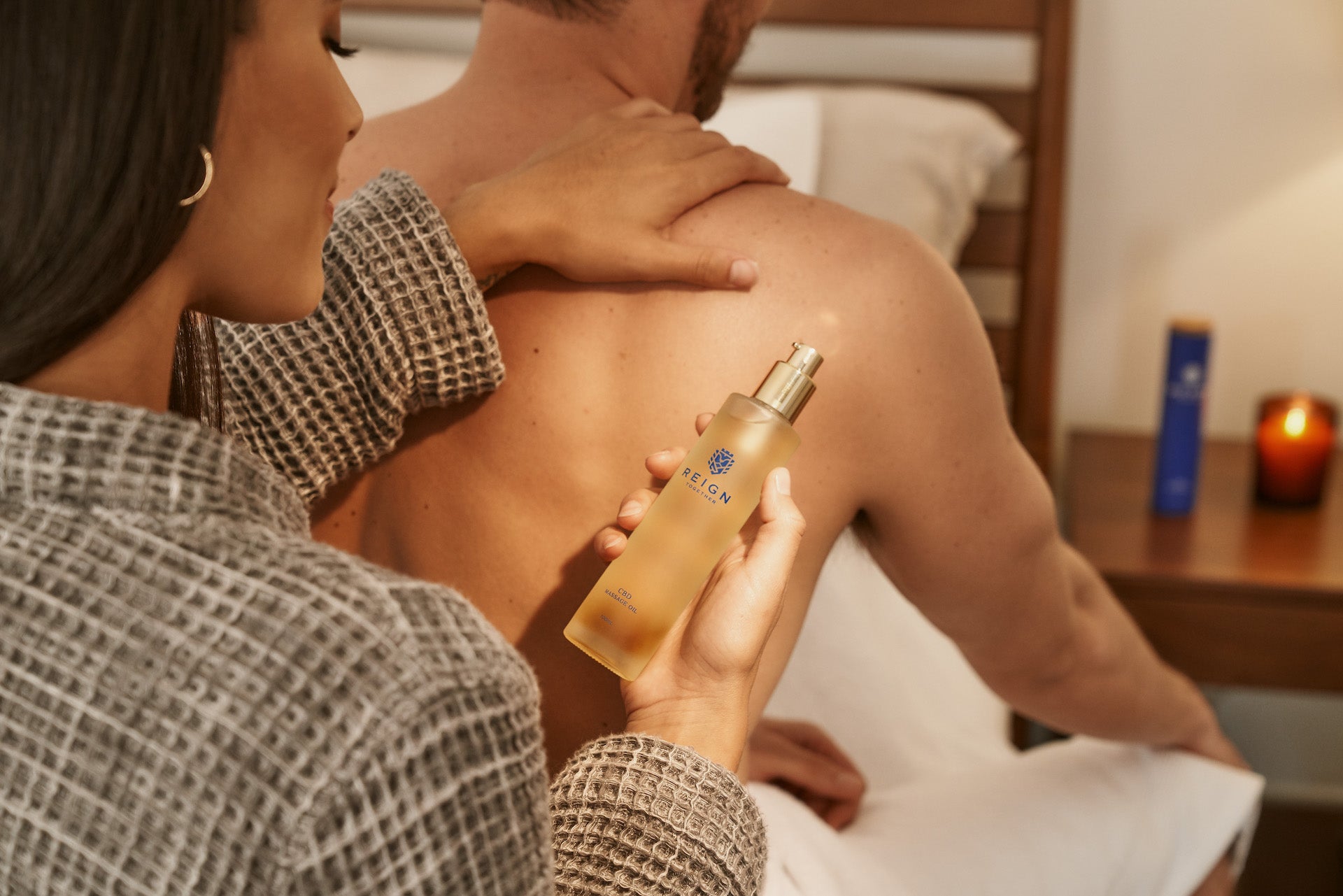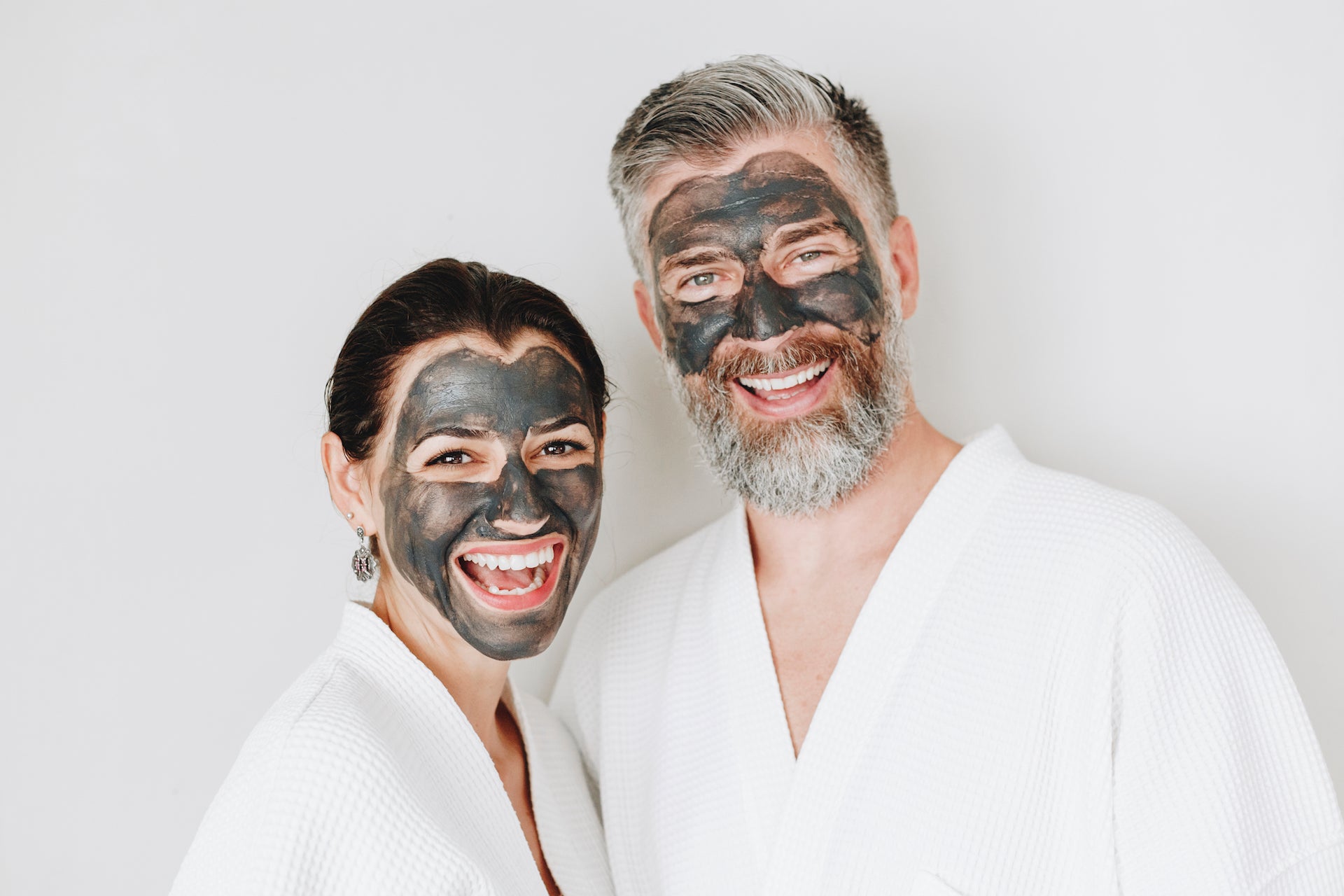
A Massage Therapist Shares How to Up Your Massage Game
by Carol Wiley
You and your partner enjoy giving each other regular massages. That is a major step in the right direction (because, after all nothing beats human touch). But one or both of you likely aren’t getting the tension relief you want with your standard back rub or shoulder massage. Learning a few pro massage techniques can help you up your massage game.
Let’s look at three of the basic techniques of Swedish massage that you can do at home — effleurage, petrissage and friction — and how to properly use more pressure.
Massage Tips: Pressure
Before we get into specific techniques, let’s get the golden rule of massage out of the way: Always start a massage with light pressure to warm up the muscles. Then, you can do a deeper massage to help release more underlying tension.
The most important thing to remember about using more pressure on your partner is to always ask for feedback. Just because you like deep pressure in a specific place doesn’t mean your partner will.
The best way to apply deeper pressure is to use your body weight — this is especially important if your partner is much larger than you. Pushing harder with your fingers or hands can cause you pain and injury. Instead, gradually lean into your partner from your center, making sure to keep your shoulders down and head up. Think of moving your body in a slow, swaying dance that lets your weight flow through your arms and hands and into your partner.
Types of Massage To Try
Effleurage
Effleurage uses long, flowing strokes in massage. You glide over the skin and muscles using your palms or the pads of your thumbs or other fingers. Light effleurage is a great way to start a massage and warm up the muscles. As the muscles relax and warm, you can use deeper pressure in the gliding movement.
Tips for effective effleurage: Massage along the entire length of the muscle, staying on the bulky part. Use even pressure as much as possible.
Petrissage
Petrissage uses kneading strokes, not unlike kneading bread. Rather than gliding your hands over the muscles like effleurage, you lift and squeeze or stretch the muscle tissue.
Use both hands for petrissage. You can work hand over hand or by moving your hands toward or away from one another. Lift and move broad areas of muscle, and be careful not to pinch.
Friction
Now that you’ve warmed up the muscles with effleurage and kneaded them with petrissage, you can get into specific problem places. That’s where friction helps. With friction, you don’t glide over the skin. You place your thumb or fingers on a specific spot and move the skin over the underlying muscles.
You can do several types of friction: direct (not moving) pressure, linear movement along the muscle fibers, circular movement or cross fiber movement at a right angle to the muscle fibers.
Caution: Don’t apply pressure directly to bones or joints. Start with light friction and increase pressure only at your partner’s request — it’s easy to create muscle soreness using this massage technique. Friction in one spot should be no longer than about 30 seconds before moving to another spot. You can come back to really tight areas for a second go if needed.
How to Give a Back Massage
Here’s a sample back massage using effleurage, petrissage and friction:
- Standing at the head of your partner, start with your hands on your partner's shoulders. Glide one hand down the muscle on the spine’s right side, while the other hand glides down the muscle on the spine’s left side. Repeat several times.
- Use both hands to knead the lower back. Continue the technique up the sides of the back to the shoulders. Knead the top of the shoulders and back of the neck.
- Friction the muscles along the sides of the spine. Apply pressure and make small circles, moving from top to bottom.
- Place both thumbs on the top outer point of one shoulder. Glide your thumbs along the muscle at the top of the shoulder, moving toward the neck. Repeat a few times. Do the same on the other shoulder.
- Friction the shoulders: Apply pressure with your fingers to muscles along the top of the shoulder. You can use static pressure or make small circles. Use the same technique on the muscles over and around the shoulder blade.
- Finish with gliding strokes down the back, becoming lighter with each stroke.
You can use similar massage techniques on other parts of the body.
With a little knowledge of how to give a massage, you’re ready to set the stage for a massage at home and select a quality massage oil, such as the nourishing Reign Together CBD Massage Oil. Then, take your time, listen to your partner’s feedback and have fun.
Carol Wiley was a practicing licensed massage therapist for almost 12 years. She is now a full-time freelance writer in Seattle, WA.
References:
https://www.spafinder.com/blog/relationships/5-tips-diy-couples-massage-valentines-day/
https://www.canyonranch.com/blog/mind-and-spirit/how-to-give-a-good-massage/
https://www.youtube.com/watch?v=2UGKItbhXPU&feature=emb_logo
https://www.reigntogether.com/products/reign-together-massage-oil
https://www.reigntogether.com/blogs/the-reign-connection/how-to-give-a-massage-at-home



